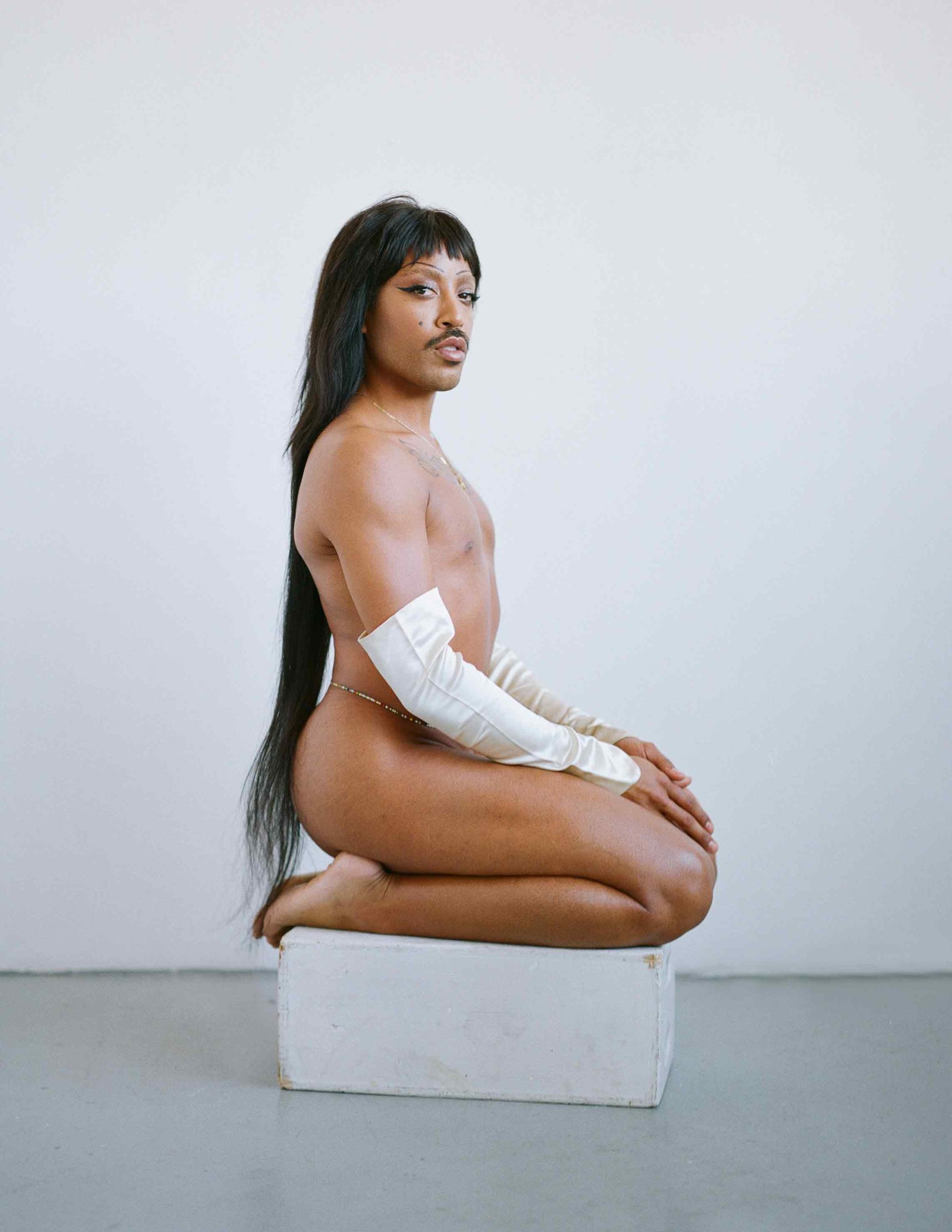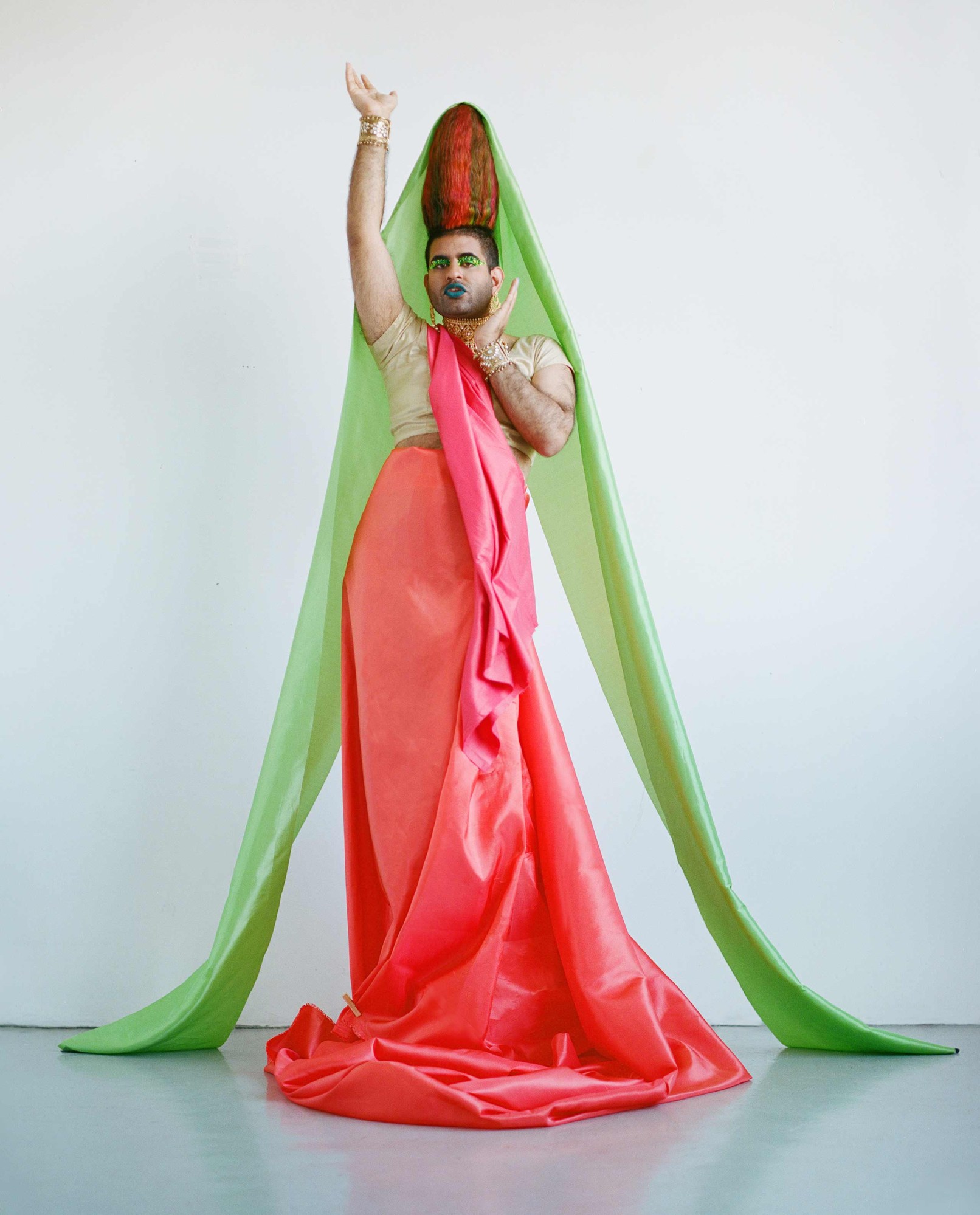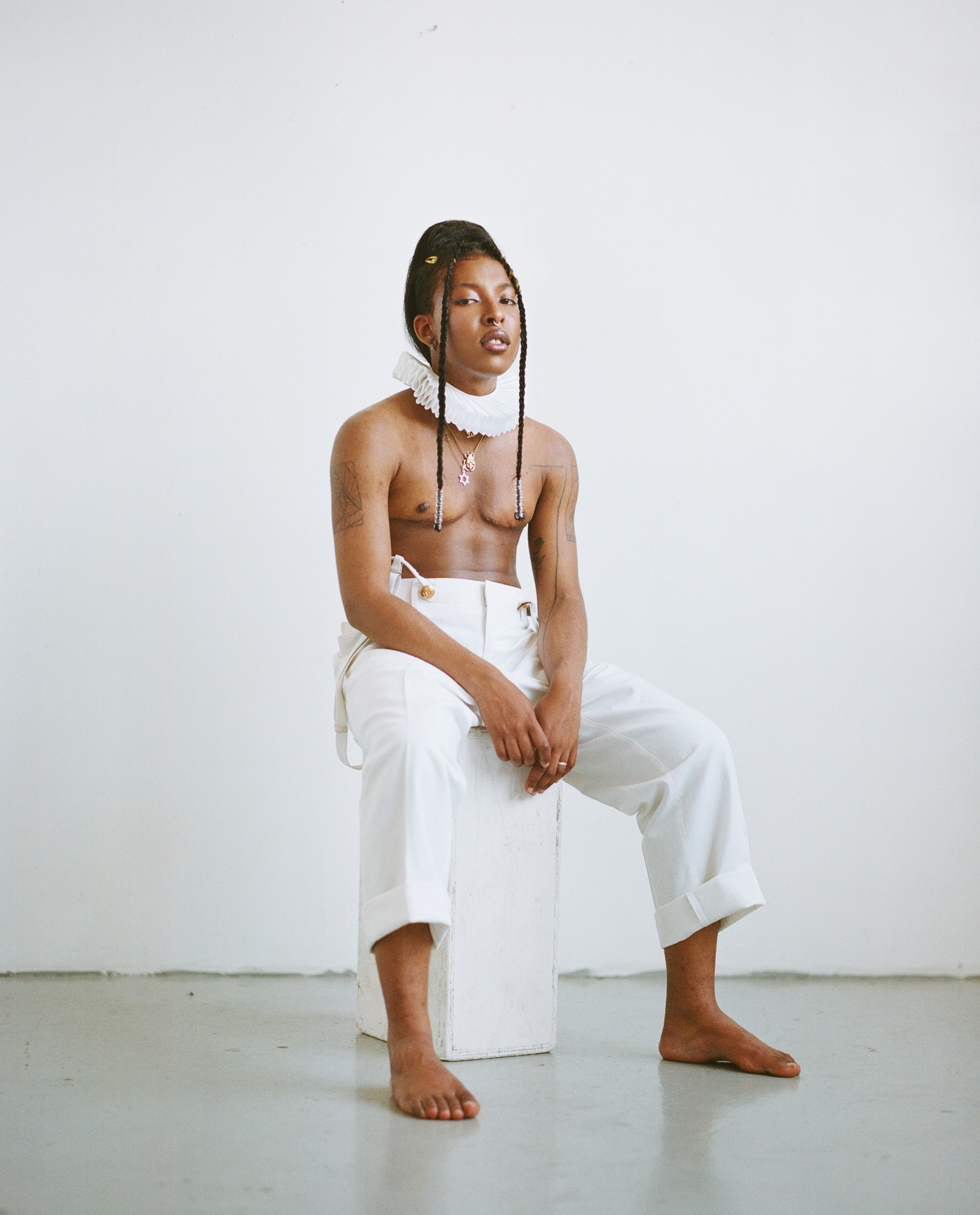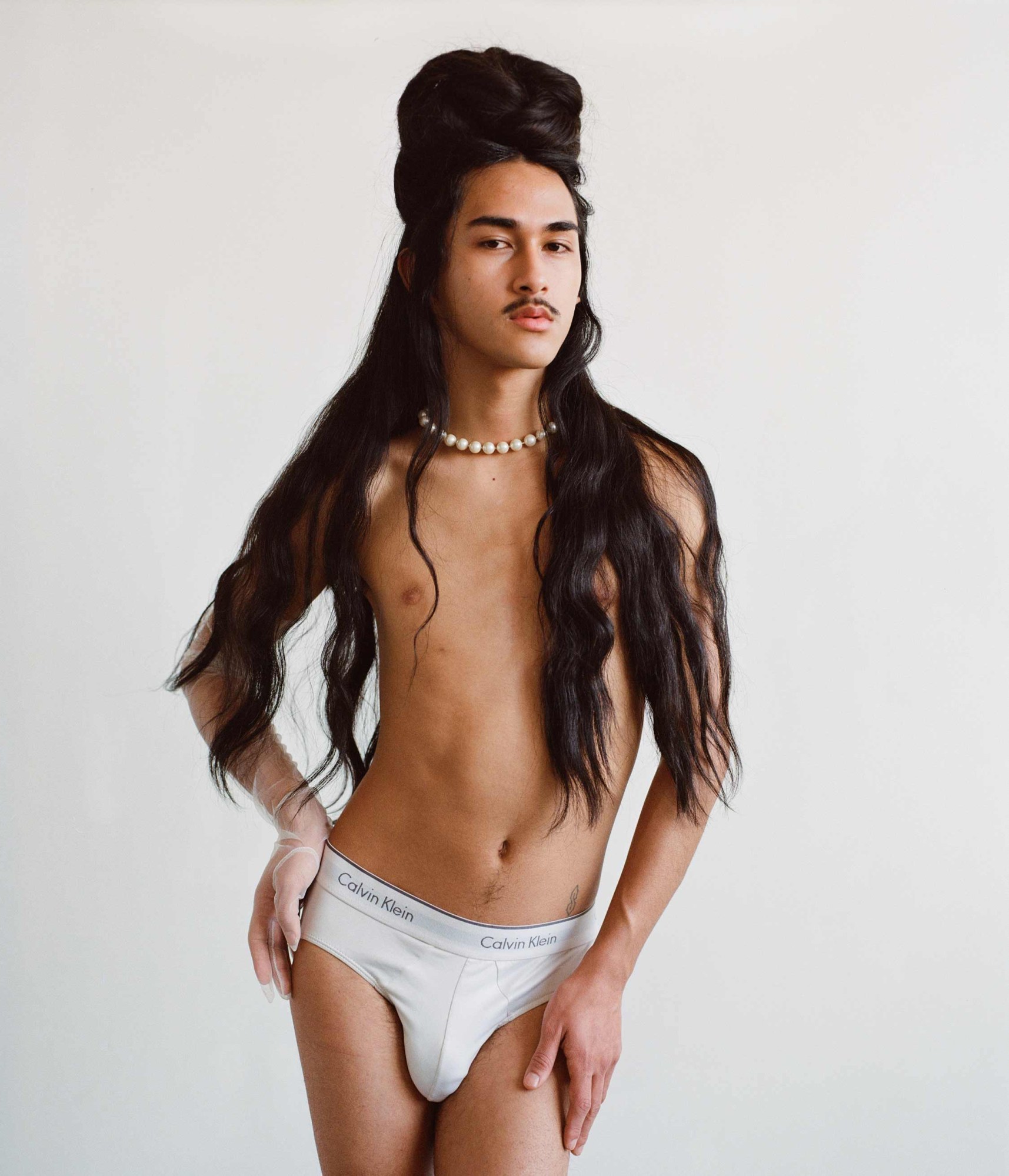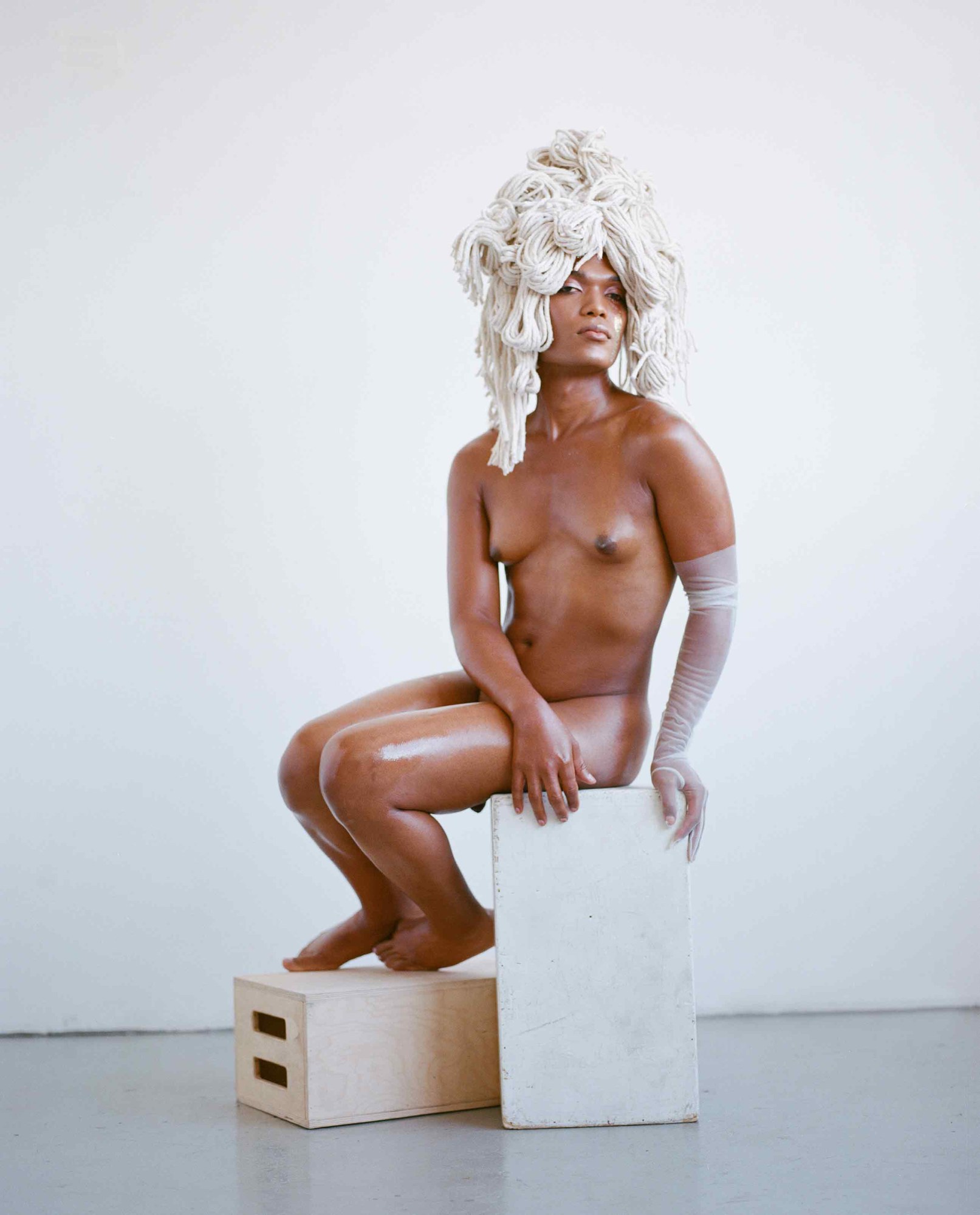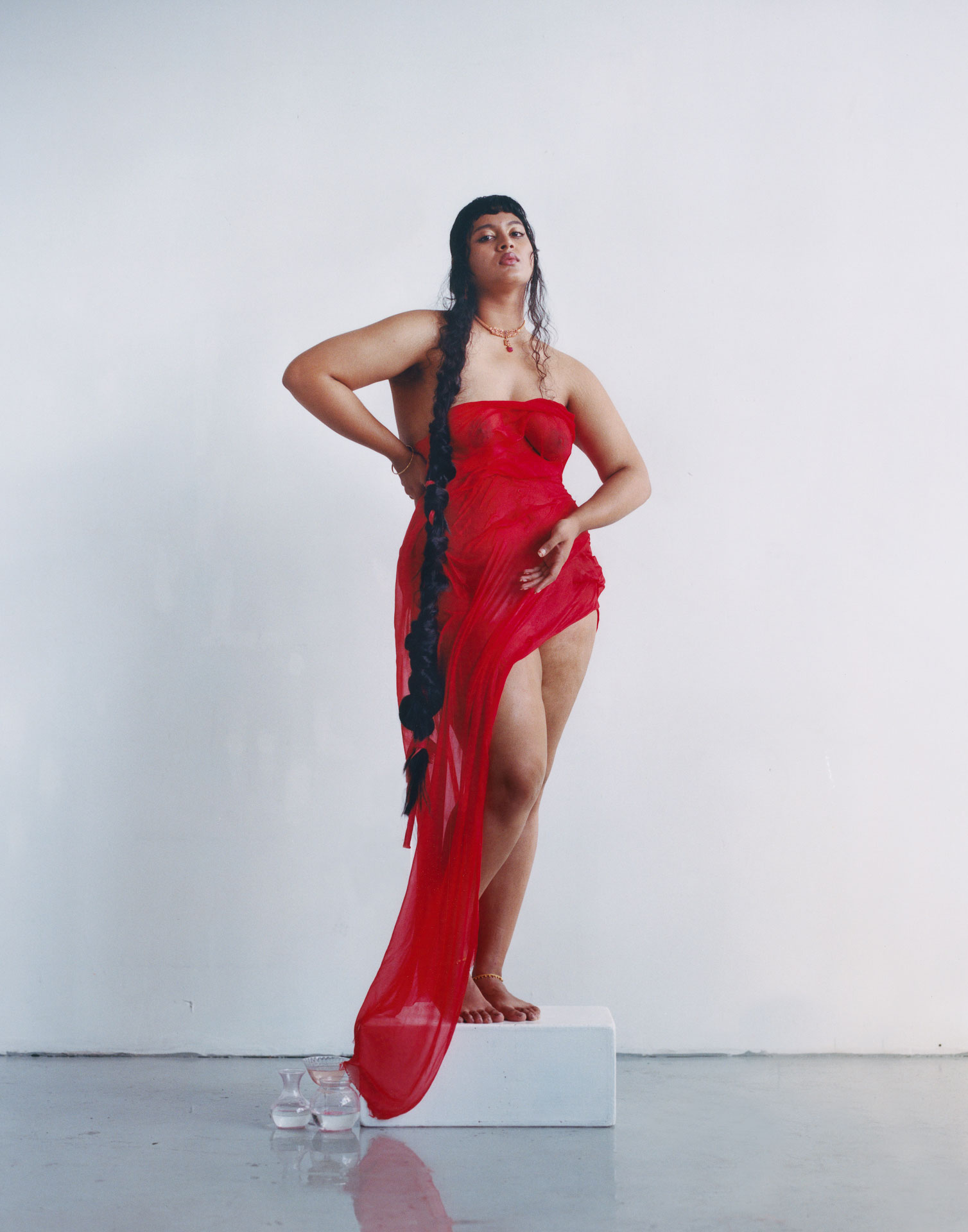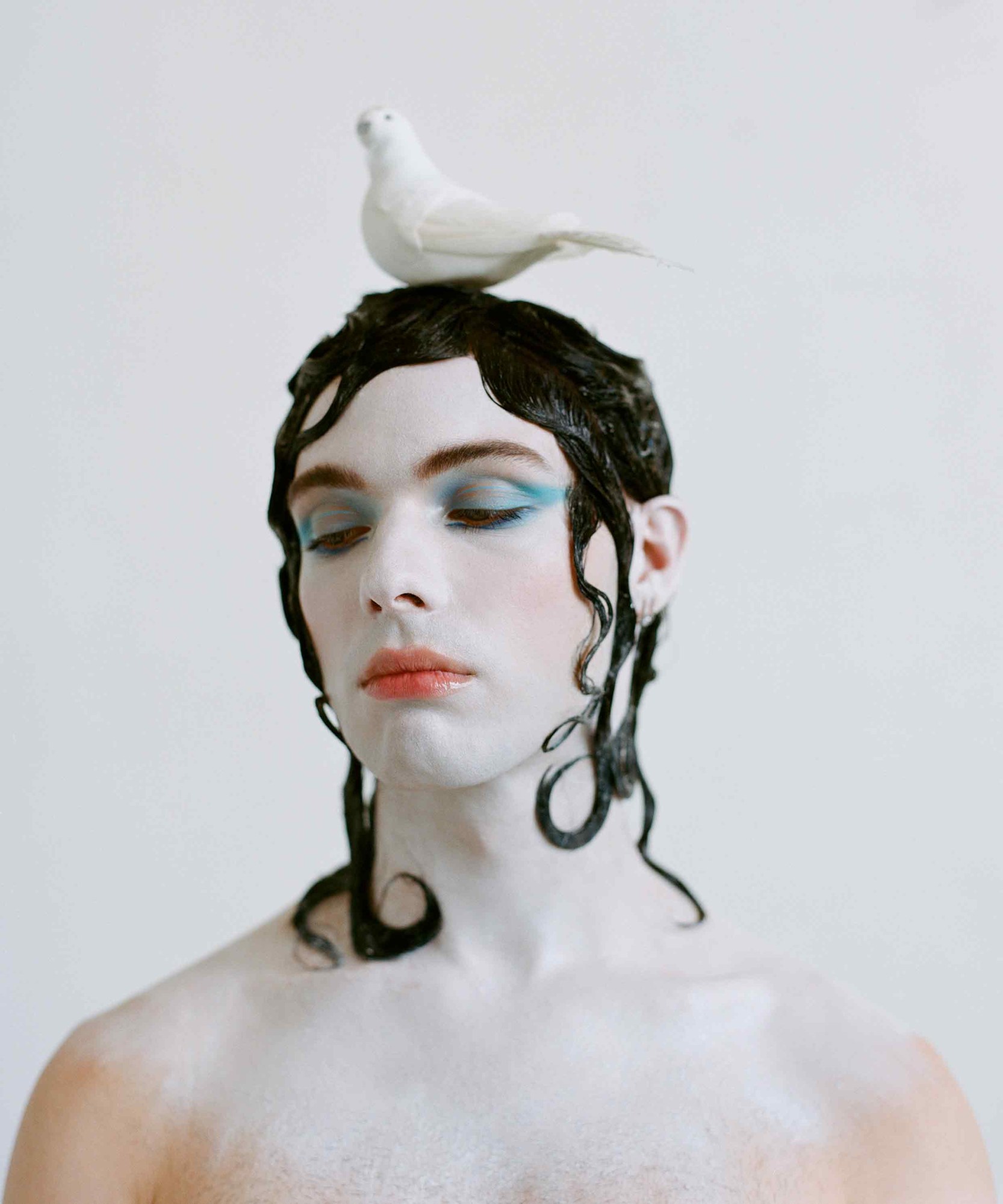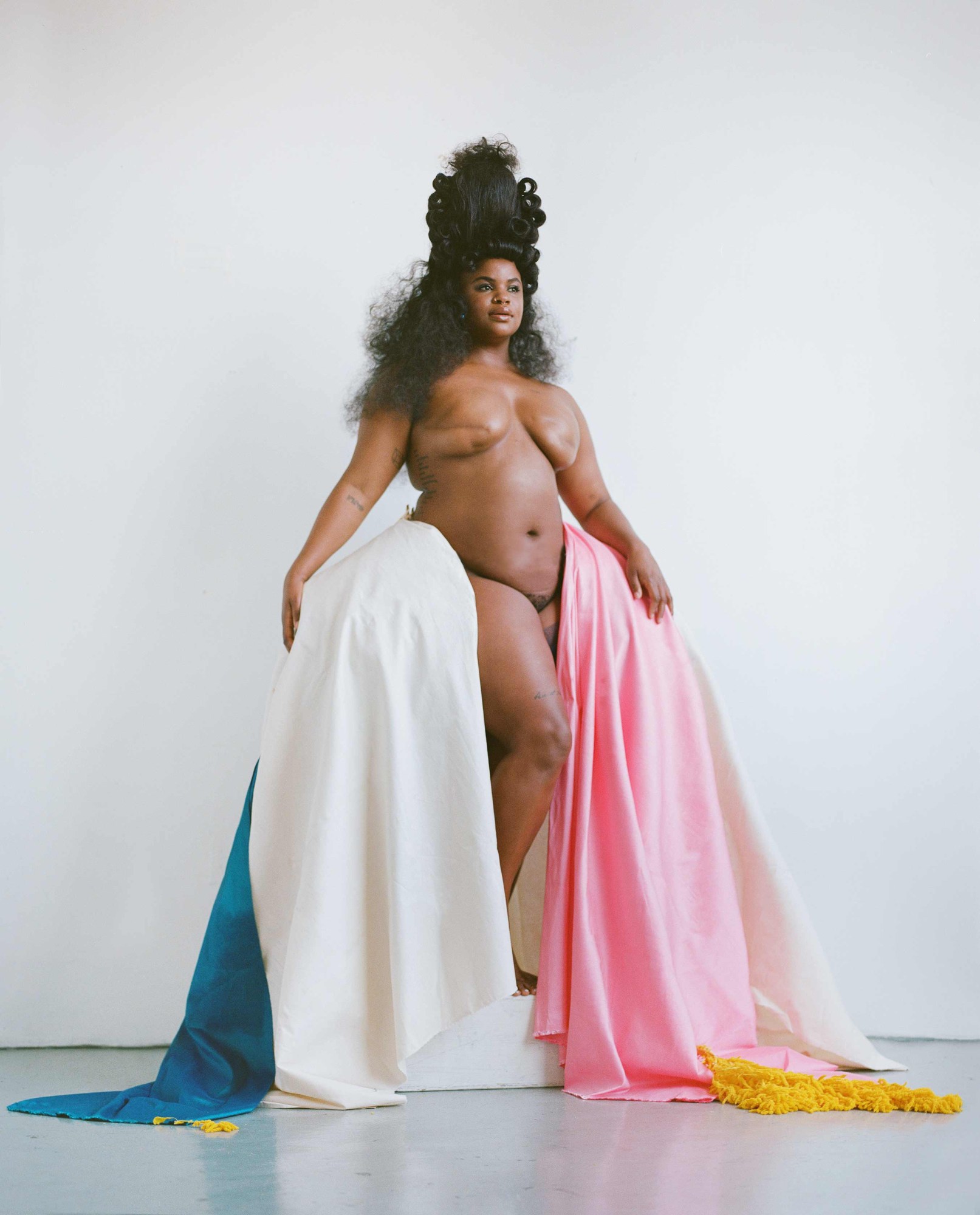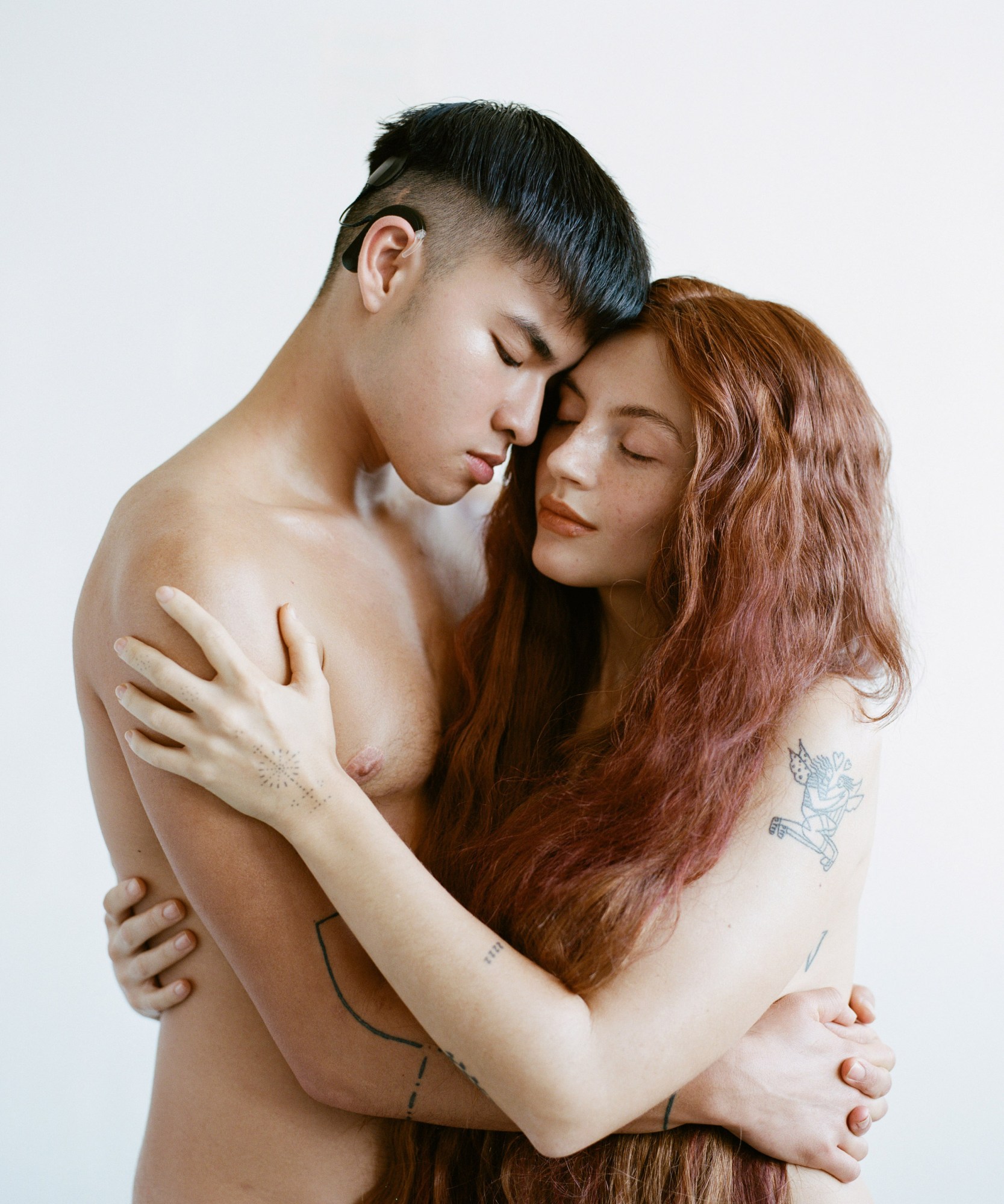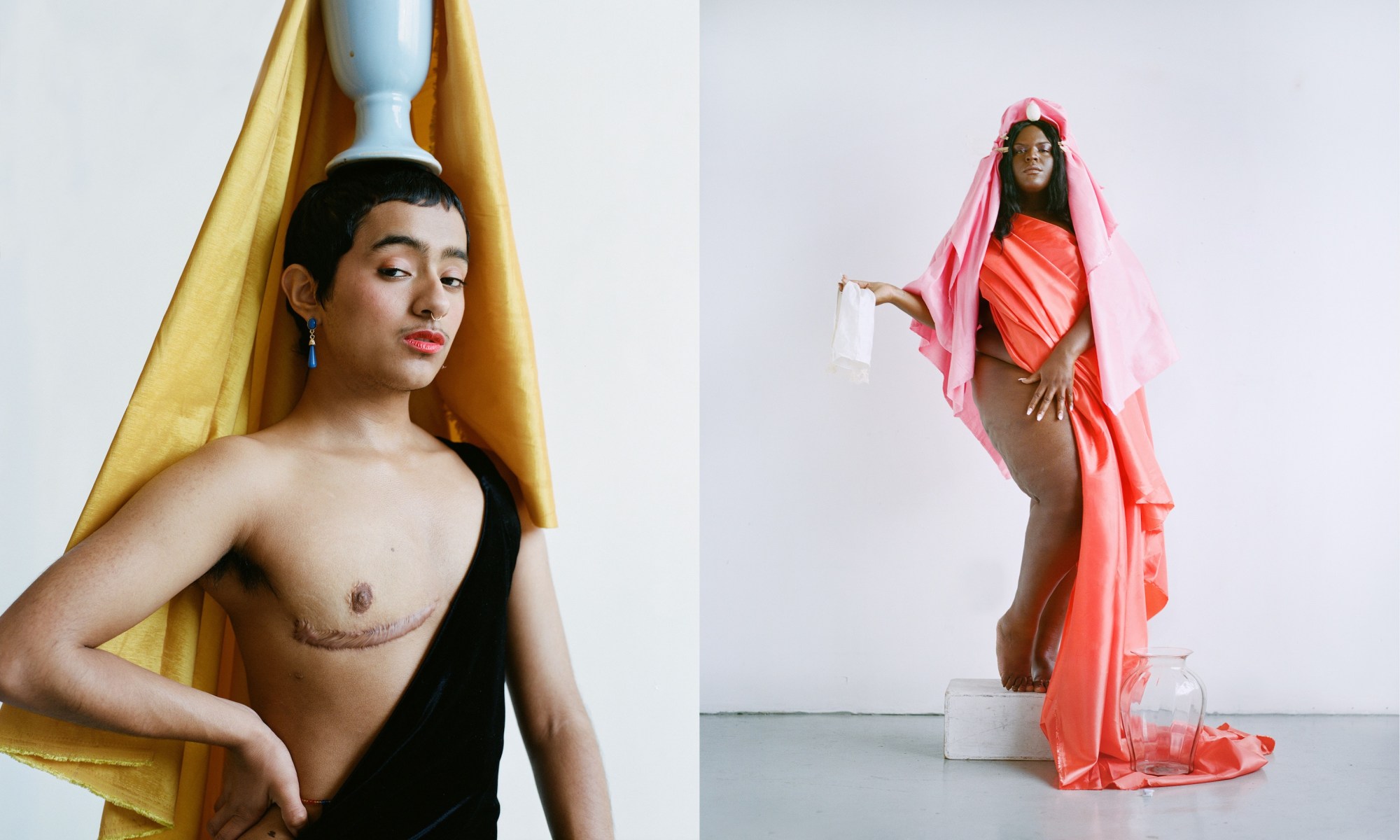Jeff Hova is kneeling atop a painted white wooden box, facing away from the camera. With their long, black hair tucked neatly behind their shoulders, they sit, wearing nothing more than a lingerie bottom, long, cream-colored, silk gloves and a single gold chain. Hova appears strikingly noble––possessing beauty, confidence and above all else, power.
This portrait is one of 19 photographs that make up Being, a project spearheaded by Camila Falquez about inserting Black and brown, queer and trans bodies back into the classical artistic canon from which they’ve historically been erased.
Being, which was published online on June 26, first took shape when Falquez began casually photographing some friends in Brooklyn roughly a year ago alongside hair artist Evanie Frausto and a rotating crew of make-up artists: Laramie Glenn, Michaela Bosh, Mical Klip and Agus Suga. From the beginning, the portraits subtly riffed on classical motifs. Falquez was born in Mexico, but grew up in Spain surrounded by museums, which she frequented as a young person, and her work often references the poses, compositions and visual references that she absorbed at that time.
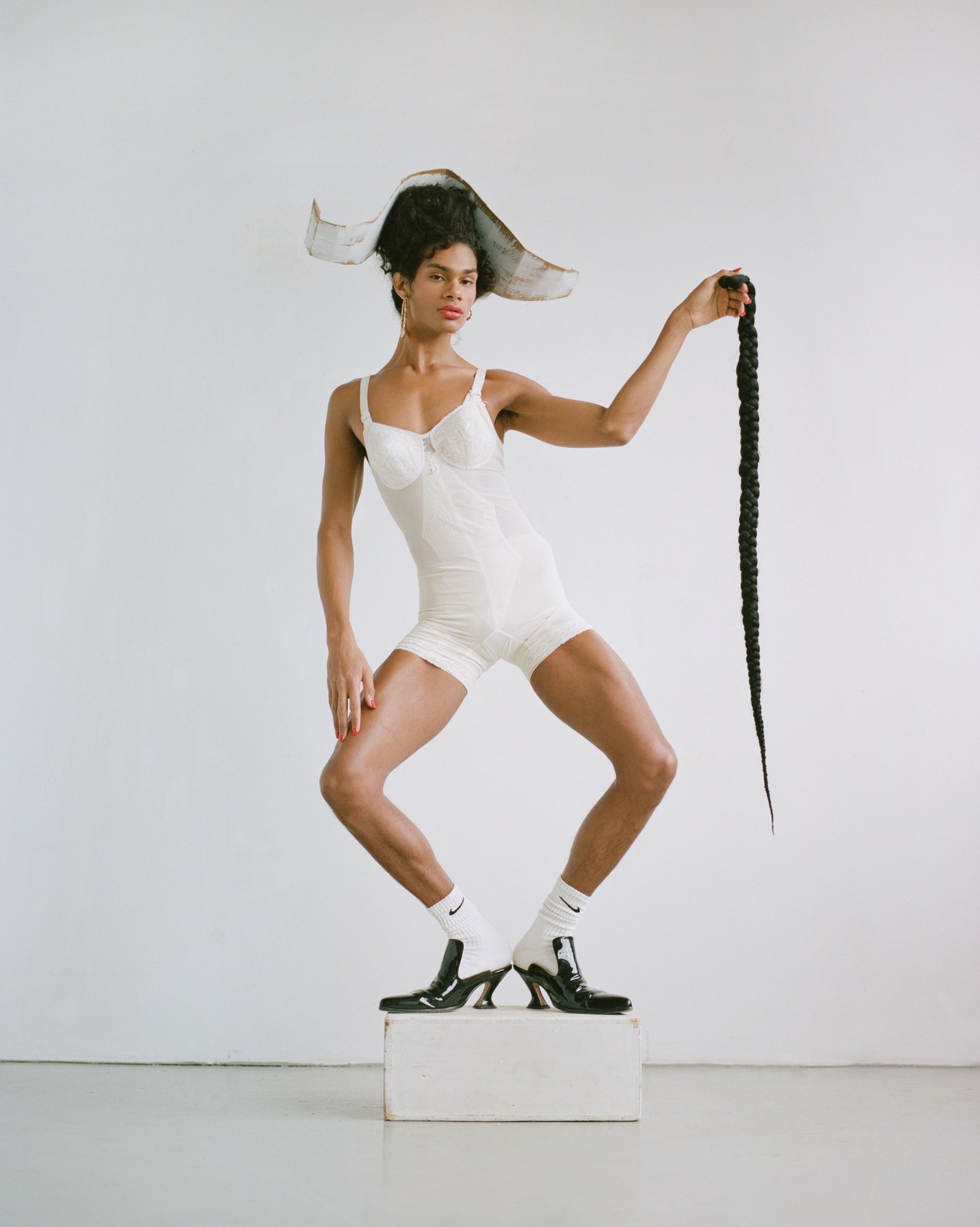
But when Falquez began looking at the first portraits from this project side by side, the images of her queer, primarily of color friends elegantly posed like Roman statues sparked something new in her. “I started very slowly understanding how important this [project] is and educating myself,” she explains, “but not only in obviously queer studies, but also in art history, like what have we learned beauty is?” Falquez became determined to create a series of photographs that challenged Western ideas of beauty by applying the same visual language she’d seen in so many museums throughout her childhood to Black and brown, queer and trans people in her community.
Falquez employs these visual codes with sharp intentionality, queering their traditional use with playful modern tweaks that work to emphasize—rather than overpower—her sitters’ natural radiance. Stark white backgrounds, pedestals, elaborate updos, rich fabrics and classical poses, create a campy pastiche that’s both familiar and unexpected. In one photo, Jari Jones and Corey Daniella Kempster appear regal, holding hands like two muses in a renaissance painting. Meanwhile, in a more whimsical portrait, sitter Lilly Olsen wears a fake mustache, a sculptural paper “hat,” and masculine tighty whities, with her hand firmly grasping a paper cane––recalling both Saint Sebastian and Rembrandt’s Portrait of Martin Soolmans.
As the project grew over the course of the last year, Falquez pitched it to various outlets for publication, as she normally would. But this project was different: she received rejection after rejection. Finally, one editor sent back a particularly upsetting note that triggered another shift. “Those words fueled me,” she recalled. “I was like, ‘I’m going to self-publish this.’” To her, it felt like proof that the historical exclusion the project is meant to tackle endures just as strongly today.

This moment was pivotal. Falquez decided that it wasn’t enough to show her sitters; she wanted their voices in the series, too. She brought on writer Anisa Tavangar to interview each of the sitters (a term coined by photographer Texas Isaiah, who uses it to empower those that others would call “subjects” or “models”) about their relationships to power and beauty, and the absence of bodies like theirs in the history of both. Tavangar then formed their answers into a manifesto that Falquez published alongside the photos. “We are the embodiment of a new history—a history renewed by reclamation and documentation,” it declares. “By being, we manifest the impossible.”
Falquez had originally planned to include 40 to 50 people in Being, but stopped shooting when the Covid-19 pandemic struck. Then, as time passed and protests in response to George Floyd’s killing ignited across the world, she felt it was imperative to release the project as is. “I spoke to my agent and I told her, like, ‘Listen, I don’t think I can hold these in, we’re in a world crisis.’” In addition to self-publishing, Falquez decided to give the photos a physical life, with permission from participants, as wheatpastes across New York City.

Falquez spent countless hours biking around Manhattan, starting in the now-gentrified West Village, scouting for walls that have the most visibility and impact. Then, she began the process of asking landlords for permission to apply the images, which proved difficult. Many people said they felt uncomfortable with the images, or simply didn’t understand the project. Falquez describes moments of impact—a building super asking if the person in the photograph is a boy or a girl, and a man passing by and staring in awe. “There are very primitive questions that, you know, some older people have probably never asked themselves, so I like that,” she says. Finally, she found seven walls on which to wheatpaste images larger than life, towering over pedestrians on the street. Massive, the wheatpastes are a sort of glamorous occupation, reclaiming public space in a way that can’t be easily scrubbed away or intimidated by the powers that be.
At a time when we are bearing witness to what Jenna Wortham writes is “the biggest collective demonstration of civil unrest around state violence in our generation’s memory,” art plays a significant role in providing a blueprint for the unknown. A project like Being is a collective manifestation––what happens when gatekeepers aren’t able to remove visual codes or literal bodies that feel too radical? What happens when history is reimagined to include those who have always been there? As the manifesto declares: “Imagine a power that is Black and queer. Imagine a power that is communal. Imagine a power that nurtures beauty and knowledge. This is the power we create today.”
This project is a print fundraiser and 100% of the proceeds will be donated to The Okra Project, G.L.I.T.S and The Marsha P. Johnson Institute. Purchase your prints here.
